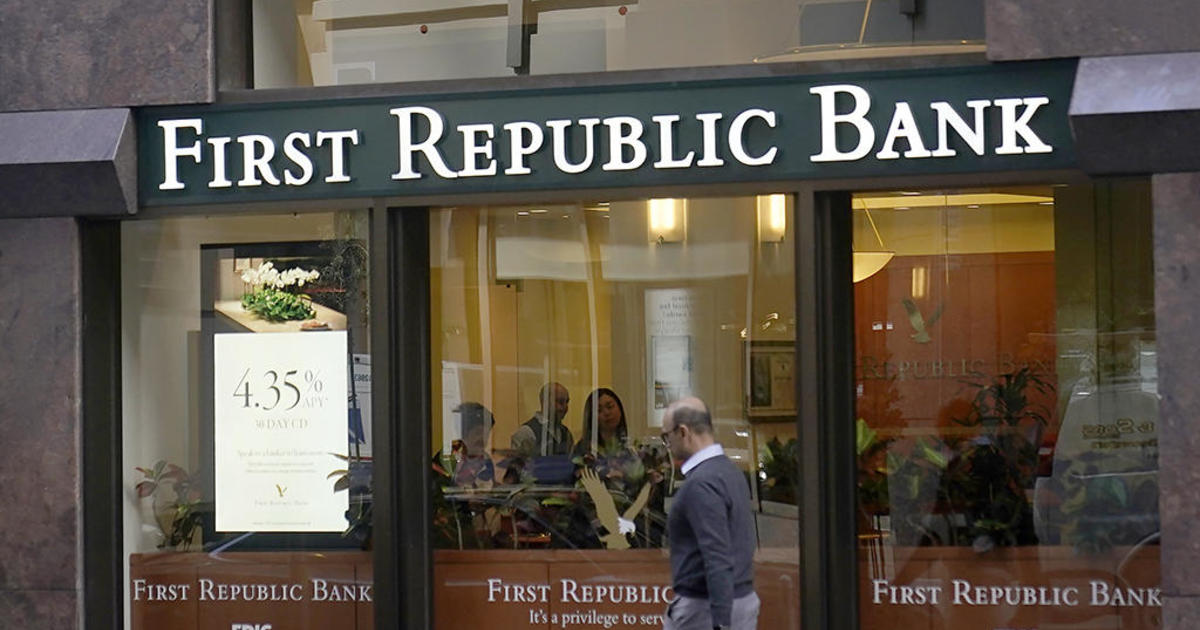What happens to First Republic Bank's stock and deposits now?
 [ad_1]
[ad_1]
First Republic Bank was teetering for weeks before it was seized early Monday by regulators, who then accepted a bid from banking giant JPMorgan Chase to acquire almost all of its assets.
That move is leading to a host of questions about what happens next, such as the sale's impact on depositors and shareholders.
Here's what to know about the bank's collapse.
Why did First Republic Bank collapse?
The California Department of Financial Protection and Innovation took over First Republic early Monday because the regulator had determined that the bank was conducting its business in an "unsound manner." The California regulator then appointed the Federal Deposit Insurance Corporation (FDIC) as the bank's receiver.
The collapse follows the March seizure by regulators of Silicon Valley Bank and Signature Bank, both of which had experienced bank runs.
Like Silicon Valley Bank, a significant share of First Republic's deposits were uninsured because they exceeded the $250,000 insurance protection that is offered by the FDIC. Such banks are more vulnerable to bank runs because nervous depositors are prone to withdraw their assets at the first sign of trouble.
Regulators assumed control of First Republic one week after the bank's executives revealed that customers had withdrawn more than $100 billion during a panic last month.
Didn't big banks already pour money into First Republic?
Yes, a group of large banks provided $30 billion in funding in mid-March to help stabilize First Republic in the aftermath of the Silicon Valley Bank failure.
To turn itself around, the bank planned to sell off unprofitable assets, including the low-interest mortgages that it provided to wealthy clients. It also announced plans to lay off up to a quarter of its workforce, which totaled about 7,200 employees in late 2022.
Investors were skeptical, and a recent devastating quarterly report sent them running for the exits. First Republic shares fell 75% last week and closed Friday at $3.51.
Who bought First Republic Bank?
JPMorgan Chase — one of the banks that contributed part of the $30 billion in March — has bought the bulk of the bank's operations and assets from the FDIC.
The banking giant is acquiring $92 billion in insured and uninsured deposits and will assume $173 billion in loans as well as $30 billion in securities, according to a Monday note from Benjamin Salisbury at Height Securities. The FDIC and JPMorgan will share losses on acquired single-family residential mortgage loans and commercial loans.
"This is an extraordinary series of events," noted Cowen analyst Jaret Seiberg on Monday. Regulators "permitted the country's biggest bank to get even bigger."
What happens to First Republic Bank's stock and shareholders?
The shareholders are most likely wiped out.
The stock has stopped trading as of Monday, and shareholders won't receive stock in JPMorgan, according to a JPMorgan spokesman.
The FDIC's insurance fund has a priority claim on the bank's assets, which must be fully reimbursed before the next class of creditors — general trade creditors — can get reimbursed, according to the FDIC. The FDIC estimated the cost to the Deposit Insurance Fund at about $13 billion.
After that, claims from unsubordinated debt holders are reimbursed. "If there are any proceeds left, the shareholders are the last in line," an FDIC spokesperson said.
Shareholders have already taken a wallop. Before entering receivership on Monday, First Republic shares had lost 97% of their value since year start, wiping out more than $21 billion off First Republic's market value.
Before it stopped trading, First Republic had a market valuation of about $660 million, according to FactSet.
What happens to First Republic Bank deposits?
The First Republic deal announced Monday means customers will be able to access all of their money, according to the FDIC.
First Republic branches will change to JPMorgan Chase branches and First Republic customers will become JPMorgan Chase customers.
"First Republic clients may bank as usual, and feel confident that their deposits are backed by the strength and security of JPMorgan Chase," the bank said in an investor presentation on Monday.
Is First Republic Bank the same as Republic Bank?
No. There are a couple of banks with names similar to First Republic that aren't related.
Republic Bank, a Philadelphia-based bank that provides banking services to customers in Pennsylvania, New Jersey and New York, is trying to get the word out that they aren't related. In a statement on its website, Republic Bank notes, "What is happening at the California-based bank, one of the nation's largest, has no local impact on Republic Bank."
There's also Republic Bank & Trust in Kentucky, which also is alerting customers on its website that it is "not related to First Republic Bank."
How big was First Republic Bank?
The bank had $229 billion in assets, making it the second-biggest bank to collapse in U.S. history after the 2008 failure of Washington Mutual, which at the time had roughly $307 billion and also was sold to JPMorgan.
The Associated Press contributed to this report.
Comments
Post a Comment